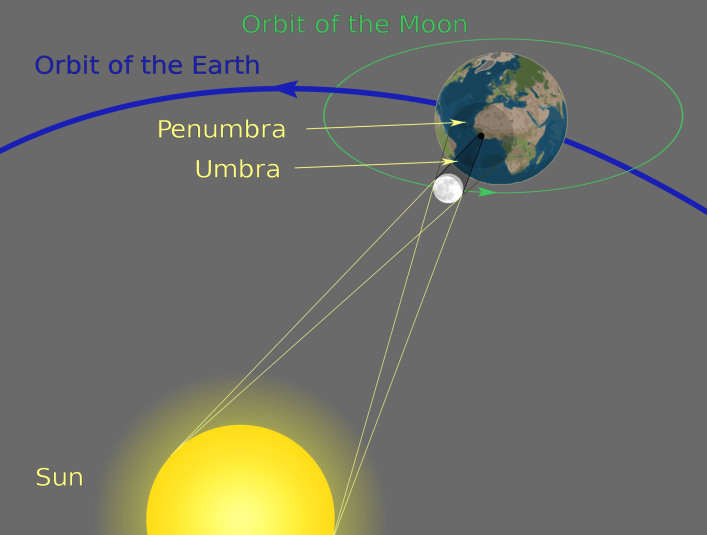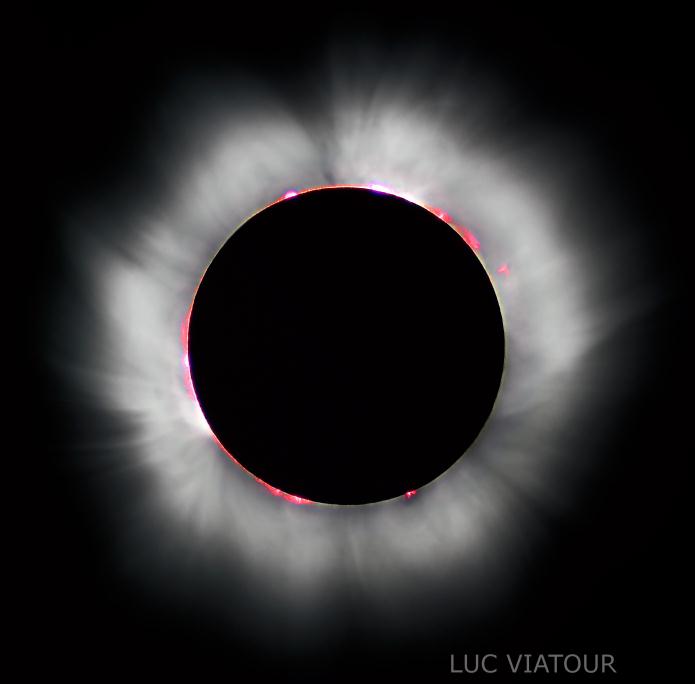Solar Eclipses
Click here to download and print this factsheet as a PDF
Solar Eclipses
Total Solar Eclipses are one of the most spectacular astronomical sights, with the moon perfectly obscuring the sun’s disc, a phenomenon unique in the solar system.


A Solar Eclipse occurs when the moon passes between the Sun and the Earth, obscuring the sun from view on part of the Earth’s surface meaning that part of the moon’s shadow falls on the surface of the Earth. There are two parts of the moon’s shadow during a Solar Eclipse, the umbra and penumbra:
The Umbra is the central part of the moon’s shadow where the sun is completely obscured by the moon, creating a total Solar Eclipse. The period in which the sun is completely obscured is called totality and can last over five minutes.
The Penumbra is the outer part of the moon’s shadow where only part of the sun is obscured by the moon, creating a partial Solar Eclipse.
The sun and moon appear almost exactly the same size from Earth, allowing the moon just to obscure the sun’s disc, a phenomenon unique in the solar system. This leads to the glowing halo seen around the moon only during total Solar Eclipses, which is actually the sun’s outer atmosphere that is invisible most of the time.
Solar Eclipses occur relatively rarely because the moon’s orbit is tilted 5.16° relative to the orbit of the Earth, meaning that most of the time, the moon’s shadow passes over or under the Earth. Furthermore, the moon’s shadow only covers a small part of the Earth’s surface, so if there is a Solar Eclipse, it will not
necessarily be visible from the UK.
Partial Solar Eclipses occur when the moon grazes the edge of the sun, only creating a penumbra.
Annular Solar Eclipses occur when the moon is at its furthest from the Earth, so that it appears slightly smaller than the sun, so does not completely obscure it.
The next partial Solar Eclipse in the UK will be on 20 March 2015, when over 80% of the sun will be obscured in the UK. However, the next total Solar Eclipse will be in 2090.
When observing Solar Eclipses, never look directly at the sun, even during a partial Solar Eclipse and never look at the sun through a telescope or with binoculars.
Oliver King & H.C.O
Weblinks
General eclipse information and dates of Solar Eclipses: eclipse.gsfc.nasa.gov/solar.html
More information on safe observation of Solar Eclipses: eclipse.gsfc.nasa.gov/SEhelp/safety2.html
Images from wikipedia.org; lucnix.be
